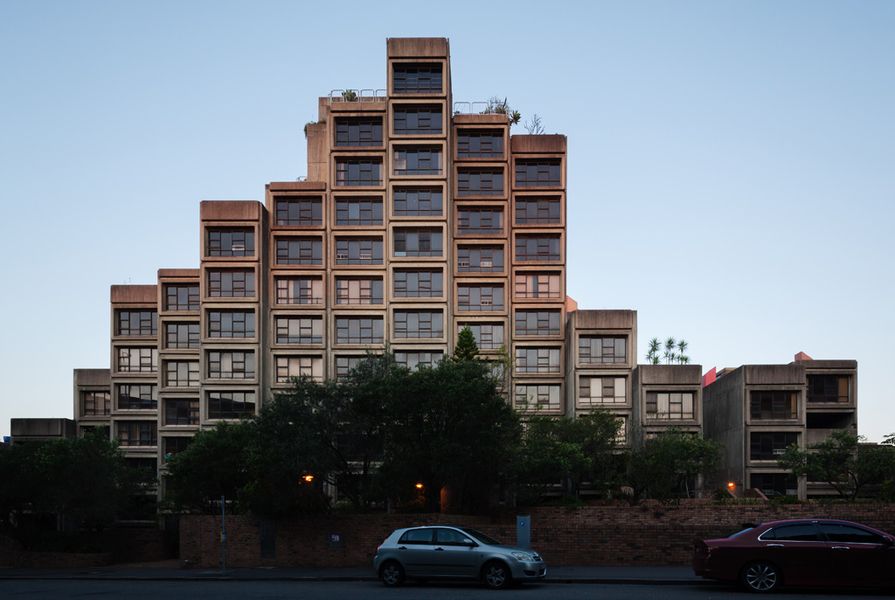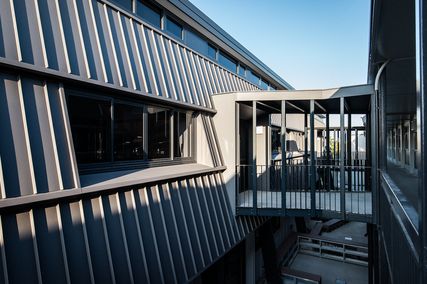Myra Demetriou, the last resident remaining in Tao Gofers’ Sirius, may be 90 years of age and legally blind, but she refuses to be intimidated by a concerted government effort to displace residents of the Brutalist social housing complex and clear the way for its demolition. As she says, “You don’t push this little bunny around.”
Sirius by John Dunn, Ben Peake and Amiera Piscopo.
Image: Save Our Sirius Foundation
Myra’s story, and the story of all of the residents of one of Sydney’s most controversial – and most celebrated – social housing buildings, forms the heart of a new book on Sirius from three members of the Save Our Sirius foundation.
Released in the wake of the New South Wales government’s decision to once again deny the complex heritage protection, Sirius, created by John Dunn, Ben Peake and Amiera Piscopo, tells “an extraordinary story of survival against the odds.” It traces the building’s history –from its birth in the 1970s through to the 25 July 2017 court decision ruling the government’s rejection of heritage protection invalid. And, with the future of Sirius hanging in the balance, the book acts as an eleventh-hour plea, a rallying cry to “save our Sirius.”
Shaun Carter, chairman of the Save Our Sirius Foundation, writes in the book’s introduction, “Democracy is not a passive thing. It’s precious, it’s ours, and we need to fight for it. If we don’t, we will get a version of democracy we don’t like, and we will lose a little bit of ourselves in the process.” As the book relates, Sirius’s story was born out of this fight for democracy, stemming from the the Battle for the Rocks and the green ban-era of the early 1970s.
When the then-Liberal government, led by Robert Askin, “tore into the heritage fabric of The Rocks with a cultural vacuousness that shocked Sydney,” as Carter puts it, a campaign to protect the area was launched by Rocks resident Nita McCrae and union leader Jack Mundey.
The movement’s success protected much of the area’s heritage and paved the way for the subsequent Labor government to commission a building to replace the homes the Askin government had demolished: that building was Sirius.
In addition to outlining the history of the building, Sirius features a number of essays on the the architectural and social significance of the complex, including one from comedian and architecture enthusiast Tim Ross and another from historian Grace Karskens.
Karskens writes that while public housing in New South Wales has a chequered history, Tao Gofers’ design for Sirius was a success.
“Sirius showed how high-density living, so often written off as ‘slums in the sky’ can be successful,” she writes. “This project nurtured the community. The building itself seemed to look after frail and elderly people, particularly when it was fully functional.”
Despite the building’s success, in 2014, history would repeat itself when the NSW government announced plans to sell the site of Sirius (along with all social housing in Miller’s Point) for it to be demolished and replaced with luxury apartments.
Sirius outlines how this decision kicked off a bitterly contested fight for the future of the building, which led to the birth of the Save Our Sirius Foundation and the Construction, Forestry, Mining and Energy Union (CFMEU) placing a green ban on the site. A recommendation for heritage listing from the Heritage Council was rejected by the government, before the Land and Environment Court of NSW found in July 2017 that the decision was invalid.
This book’s account of the fight to save Sirius closes with this court decision, and the statement that while the campaign continues, “what happens next is uncertain.”
The NSW environment minister Gabrielle Upton’s recent decision to again deny the building heritage protection, announced on 25 October, has made Sirius’s future all the more precarious.
The Australian Institute of Architects has since released a statement condemning the decision. “What is particular disappointing here is that the government has ignored the advice of the very experts they have appointed to give them independent advice,” said the Institute’s NSW chapter president Andrew Nimmo.
In the light of this decision, Sirius provides valuable insights into the architectural significance of the housing complex. By telling the story of those who lived in the building and those who have fought for it, it makes a powerful argument for the importance of well-designed social housing in the inner-city. A quote from Myra Demetriou on the book’s back cover encapsulates the anger of residents and supporters portrayed in the book. She says, “Are we to live in the only major city in the world without social housing?”
Sirius is published by Piper Press and will be launched by Sirius supporter Lord Mayor Clover Moore at Kinokuniya on 8 November.
Sirius is available to purchase here.


















